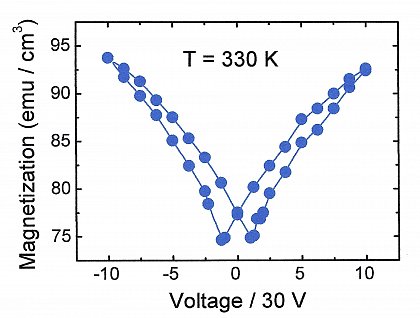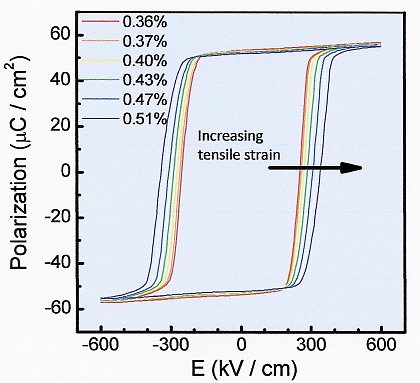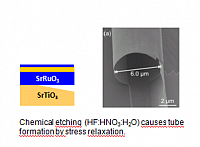The research
Research topics
Our research is aimed at the fundamental understanding of ferroic ordering and switching in thin films, at interfaces, in nanostructures and bulk materials. Ferroics are materials with a switchable remanent magnetic, electric or elastic polarization. They find wide-spread application in data storage, sensors and piezoelectric actuators. The properties of thin films can be altered and controlled utilizing interface effects and elastic strain. One major goal of our research is the discovery of strain-driven effects. In-situ dynamic strain control in epitaxially grown oxide films and in semiconductor membranes is realized by using piezoelectric monocrystalline substrates. The approach gives access to direct measurements of strain-dependent electronic and optical properties. Thin films are grown by pulsed laser deposition. Structure characterization in controlled strain states is done using in-house or synchrotron-based x-ray diffraction.
Current Projects and Future Goals
Strain-coupled magnetoelectric heterostructures
The magnetoelectric coupling at heteroepitaxial interfaces between a magnetic and a ferroelectric oxide are in one focus of our research. Elastic strain provides one coupling mechanism; hence, the strain control of magnetic order in complex oxides is studied directly using dynamic strain from piezoelectric substrates. This helps to identify relevant materials. Interfaces between ferroic oxides will be prepared with atomic precision and locally characterized on the nanoscale using force microscopy.
C. Thiele et al., Phys. Rev. B 75, 054408 (2007); A. D. Rata et al., Phys. Rev. Lett. 100, 076401 (2008)

Bild Piezoelectric substrate for reversible strain application in epitaxially grown films

Bild Strain-controlled magnetoelectric effect of a La0.7Sr0.3MnO3 film
Strain-dependent ferroelectric switching
Ferroelectric order reacts strongly to distortions of the crystallographic lattice. The switching speed also depends on interface and strain effects, but the relevant physical mechanisms are much less understood thus far. The switching dynamics in prototypical ferroelectric films is investigated in controlled strain states using capacitor geometries and piezoresponse force microscopy (PFM).
M. D. Biegalski et al., Appl. Phys. Lett. 98, 142902

Bild Ferroelectric switching of a BiFeO3 film in varied elastic strain states
Oxide micro- and nanostructures
The formation of membranes and rolled-up tubes from heteroepitaxial oxide films is yet little investigated even though the approach is known for semiconductors. All-oxide micro- and nanoobjects are obtained by methods of lithography and etching procedures. Tubes are promising for obtaining new circular polarization states and strong strain gradients.
C. Deneke et al., Nanoscale Research Letters 6, 621 (2011)

Bild Rolled-up SrRuO3-Pr0.7Ca0.3MnO3 tube



